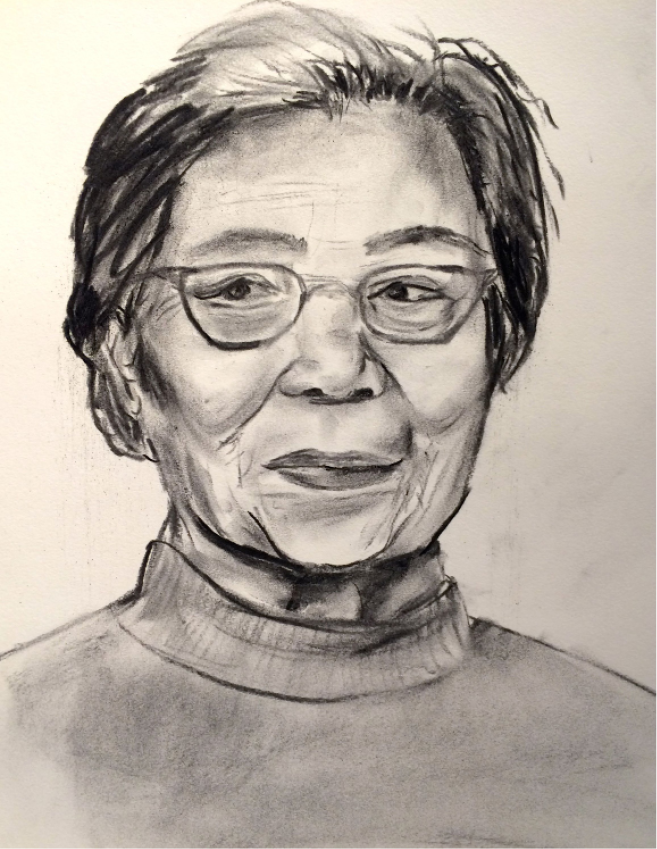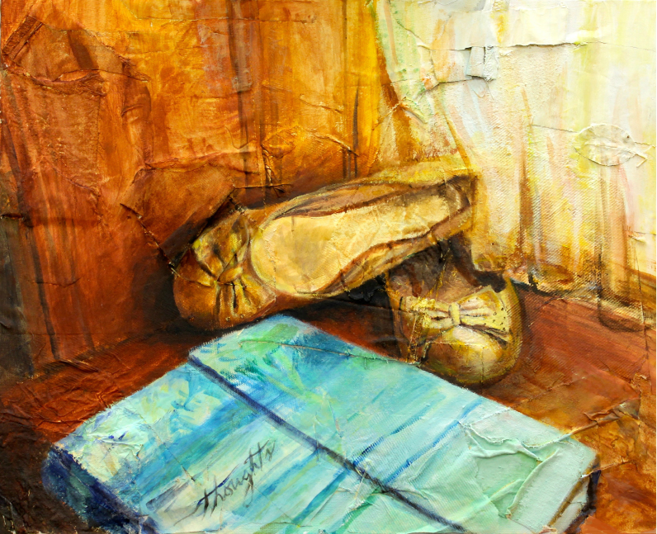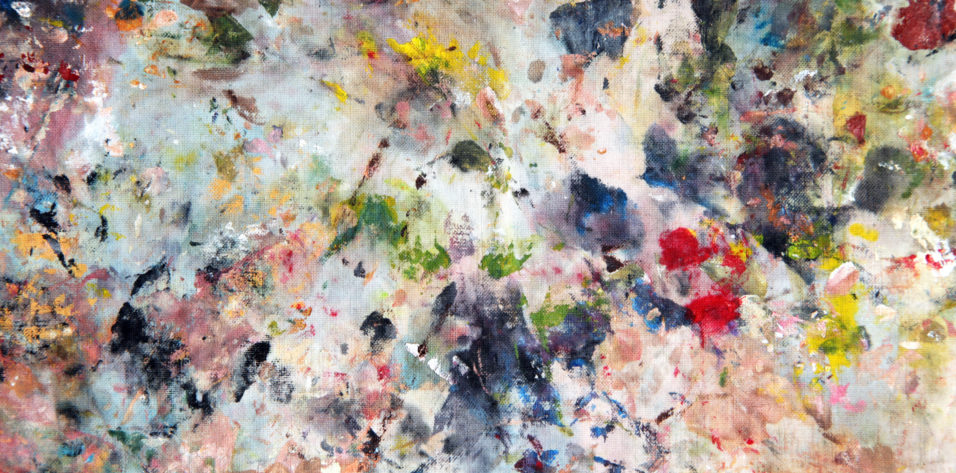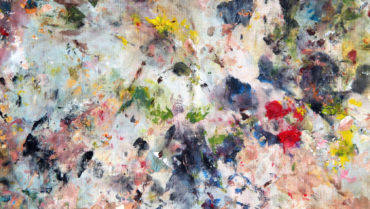Michelle Guo, BA

As a teenager, I considered pursuing a career in fine arts. Before I knew I wanted to become an ophthalmologist, I spent hours each week trying to capture in my art the beauty and humanity I saw in the world around me. Throughout high school, college, and now medical school, art has remained a part of my life, especially as I navigate my way toward a career in ophthalmology (Figures 1 and 2).

Figure 1 | Grandmother | Charcoal on paper; 2016; Michelle Guo, BA.

Figure 2 | My Favorite Things | Mixed media on canvas; 2011; Michelle Guo, BA.
Art shapes the way I see the world. I am reminded of paintbrush bristles as I remove trichiatic eyelashes from my patient in the clinic. While observing the precise incisions my mentor makes when performing cataract surgery, I note the care she takes with each movement. The precision of drawing has allowed me to hone my surgical skills. When conducting glaucoma research this year, I have used surgical instruments to carefully dissect out and position mouse retinas onto glass microscopy slides. Gently teasing apart fine layers of tissue with forceps has helped me to envision myself in the OR performing delicate surgeries as a future ophthalmologist.
My undergraduate experiences bringing collaborative art projects to a nursing home ultimately solidified my decision to pursue a career in medicine. Each week, I worked with a team of students to teach art to patients at the nursing home. The activities room would fill with conversation as students paired up with patients to sculpt clay figures, paint decorations, and reminisce about happy times. I found working directly with patients and hearing their stories to be both a privilege and a joy. These experiences have continued in medical school as I play a more central role in providing patient care. As I draw my patient a diagram of the eye and the meibomian glands on a piece of paper in the exam room, I explain the new diagnosis of chalazion and describe management steps. I use my artistic skills in the setting of patient care to articulate concepts and empower patients to manage their conditions.
Stephanie M. Tillit, BA

“How do you know you will be a good surgeon?” This is a common question asked during the interview season. It may come as a surprise that part of my answer always included a reference to my love of art.
Coming from a family of engineers, I can only assume it was my bloodline that inspired my love of the sciences. From a young age, however, I was also surrounded by artistic influences and opportunities, which ultimately shaped my hobbies outside the classroom. Hearing my father play the piano by ear inspired me to try musical instruments such as the piano and guitar. Every year, I participated in my hometown’s themed art competitions. One thing these artistic endeavors have in common is that they required many hours of practice to improve manual dexterity. There is nothing more satisfying than mastering a skill after countless efforts and a large investment of hard work and patience.
Although art is a hobby, I have found ways to incorporate it into my everyday life. Before medical school, I had the privilege of teaching English in a middle school English Speakers of Other Languages (ESOL) classroom with City Year Miami. In this experience, I found myself using artistic skills, often filling whiteboards with pictures to teach concepts to students. This skill became highly translatable to patient education and has been essential to teaching patients about their anatomy, especially in the field of ophthalmology.
An exciting part of becoming an ophthalmologist is how much innovation occurs in the field. Technology advances, and, as in ophthalmology, artistic mediums have also evolved. Although I have enjoyed creating artwork in traditional ways such as watercolor (Figure 3), I have more recently ventured into the realm of digital art creation and now also use my tablet and applications to create artwork for digital platforms (Video). I practice this new skill consistently and, as with all other forms of art, know that it will entail a process of lifelong learning and fine-tuning.

Figure 3 | Vision | Watercolor and ink on paper; 2021; Stephanie M. Tillit, BA
Video | Iris and Innovation | Created on Procreate; 2020; Stephanie M. Tillit, BA.
The patience and discipline built while creating art will likely serve me in the future as I strive to become the best surgeon I can be. Who I am outside the clinic and the OR is inseparable from how I will practice ophthalmology.


